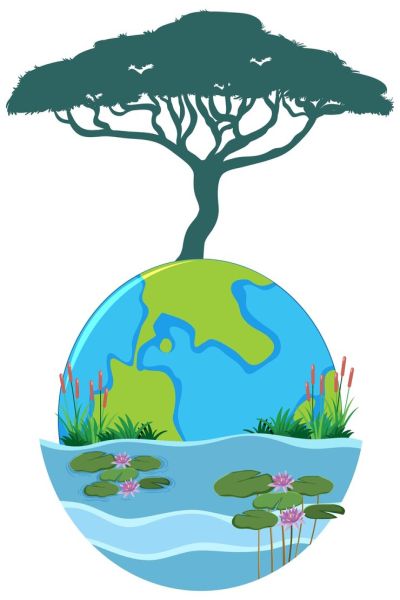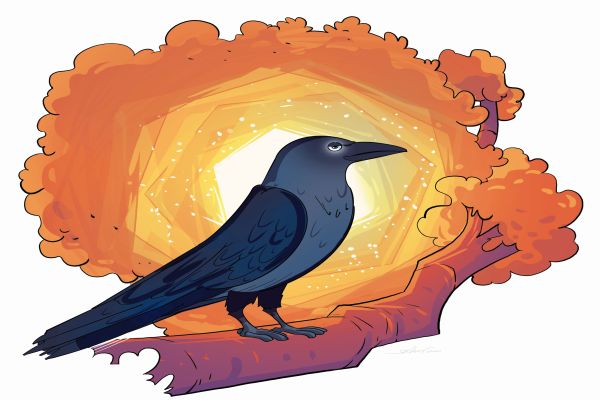Joy in every shade
Discover the magic of colours, one sheet at a time. Download this colouring sheet and get going.
Discover the magic of colours, one sheet at a time. Download this colouring sheet and get going.
On World Wetlands Day, try this memory game and see how much you know about India’s Ramsar sites
Today is World Wetlands Day. India has more than 1200 wetlands with 75 being designated as Ramsar sites. This memory game is all about India’s Ramsar sites. Can you match the wetland to the state it belongs to? Go on, try your hand at it.
There are 12 differences between the two images. Can you spot them all? Try it out now.
This week’s puzzle has 12 differences that make sure the two pictures are different. Find them all.
Picture: GettyImages/IstockPhoto
What are wetlands? What is RAMSAR? How are the two related? Read on to learn more…

February 2 is World Wetlands Day. What are wetlands? How important are they to the Earth? Let’s learn more about these vital ecosystems. Click on each panel to expand.
Find out what’s happening around the world. Take a look at the world scene.
Here is a glimpse of all that is happening around the world. From the world’s biggest cruise ship to the world’s youngest hiker, there’s something exciting happening all the time.
How much do you know about this sport? Read on to know more and solve the jigsaw puzzle too.
Roger Federer, Rafael Nadal, Novak Djokovic, Serena Williams, Naomi Osaka… these are a few of the great sportspersons of modern times. Which game do they play? Tennis, of course. Let’s learn more about this sport and how it works.
Scoring System: Tennis uses a unique scoring system with points progressing from 15 to 30 to 40. A game is won by scoring four points and winning two consecutive points after reaching deuce (40-40). The aim of tennis is to win enough points to win a game, enough games to win a set, and enough sets to win a match.
Deuce and Advantage: When the score reaches 40-40, it’s called deuce. From deuce, a player must win two consecutive points to secure the game. The first point won after deuce is called advantage and, if the same player wins the next point, they win the game.
Tiebreakers: If a set reaches 6-6, a tiebreaker is played. The first player to reach seven points with a margin of two wins the tiebreaker, securing the set.
Love: In tennis, “love” means zero. So, a score of 15-0 is called 15-love.
Court Dimensions: Tennis can be played on different surfaces like grass, clay, and hard courts. The dimensions of the court vary slightly for singles and doubles matches.
Serve and Return: The game begins with a serve, and players alternate service after each game. The receiver must return the serve within the lines, initiating a point. The server aims to win the point by making a shot the opponent can’t return.
Grand Slam Tournaments: Tennis has four major tournaments known as Grand Slam events: Australian Open, French Open, Wimbledon, and the US Open. Winning all four titles in a calendar year is a Grand Slam.
Strategy and Tactics: Tennis involves a mix of powerful serves, accurate groundstrokes, volleys at the net, and strategic play to outsmart opponents.
Now that you know how the game is played, try your hand at this puzzle. Can you put the pieces together to form the full image?
Time for marine mania! Make your own paper shark by following the instructions.
Let’s get busy! Make your own paper shark by following the below instructions.
Photos: Getty Images/iStockPhoto
Episode 51: In which Kakabhushundi learns about the universe and multiverse. Read on to know more and try the activity at the end
Episode 51: In which Kakabhushundi learns about the universe and multiverse.
While Rama is talking to Kaikeyi, a crow sitting atop a tree is watching and closely following the conversation.
Kakabhushundi (to himself): This is the 11th time I am seeing all this. This yuga has more science than any other cycle. If human knowledge of science grows this way, humans will be able to time travel and, once that happens, it could possibly be the last kalpa. I must confirm this with my guru, Sage Lomasa.

Kakabhushundi moves his wings in a strange way and a wormhole appears before him. He enters it and travels 1000 times faster than the speed of light and reaches a mountain in a parallel universe, where Sage Lomasa lives.
Sage Lomasa: Welcome back, Kakabhushundi. Did you see anything strange this time?
Kakabhushundi: Yes, the last time I watched Lord Rama as a child, he did not have as much scientific knowledge as he did this time. His brother and he were talking about technology and controlling rockets and so much more.
Sage Lomasa: You probably visited the Treta Yuga of the last kalpa, where most students have access to all kinds of scientific knowledge but need some guidance to use them. In the same kalpa’s Kali Yuga, the children have more advanced knowledge and access to devices like cell phones, satellites, the Internet and more. They are like demi gods who have not yet realised their power.
Kakabhushundi: What? You are talking about mortals, right?
Sage Lomasa: Yes, these children will be the decision makers for the future in their period and possibly find ways to reach other worlds.
Kakabhushundi: I wanted to ask you about something. Lord Rama gave me the power to time travel to parallel universes to watch different versions of the Ramayana and the Mahabharata. Can you tell me why?
Sage Lomasa: Because you are the messenger who is going to tell the world that the universe is not one but a multiverse where similar events happen in parallel universes several thousand light years away from each other.
Kakabhushundi: What is multiverse and parallel verse?
Sage Lomasa: All right. Let me start with some basics about our galaxy and universe before going to multiverse. We live in the Milky Way, which contains 200-400 billion stars and at least 100 billion planets. Many of these planets revolve around stars and may possess life. But much of it is unexplored.

Kakabhushundi: So, we are like a dust particle.
Sage Lomasa: Smaller than that when compared to the scale of the galaxy. The universe is packed with billions of galaxies. The Milky Way itself is part of a Galactic Super Cluster called Laniakea. It’s like being a single nerve among the billion nerves in the human body. According to current understanding, such multiple clusters create a huge egg-shaped structure called PerAndam or the big egg.

Kakabhushundi: Are you telling me we live in an egg?
Sage Lomasa: And there are multiple such universes.
Kakabhushundi: Wait, I have heard something similar about Brahma being born from Lord Vishnu’s dream.
Sage Lomasa: Exactly. Something like that. Basically, there are billions of such eggs (universes), each with its own laws of Physics and Science that we do not know. Our predictions and calculations are based on whatever we observe. So, some version of Rama might be very intelligent and technically superior to another. But that doesn’t mean it ends there. It keeps happening again and again. Which is why you are an immortal time-travelling being. The purpose of your life is to take this knowledge of every edge of every universe.
Kakabhushundi: Hmmmm, that is a humungous task. But, if I don’t have anything to do, this immortal life will be boring. Anyway, let me explore more about Rama before I start taking the message around.
Kakabhushundi travels back to the same spot from where he was watching Rama. Sage Lomasa smiles as he knows that Kakabhushundi will be most confused when he sees all the versions of whatever is happening.
The author is the founder and CEO of Vaayusastra Aerospace, an IIT-Madras incubated ed-tech startup that offers Air Science workshops for children between five and 14 years.
Now that you have read the text and learnt some more about our universe, try this activity. Can you fit all the words into the grid?
The Basilica of Bom Jesus, which is part of the UNESCO World Heritage Site’s Churches and Convents of Goa, is world famous. Read on to know why.
One of the Seven Wonders of Portuguese Origin in the World and among the best of baroque architecture in India, the Basilica of Bom Jesus in Goa, is the first minor basilica in the country. In Portuguese, it is known as Basílica do Bom Jesus and as Borea Jezuchi Bajilika in Konkani.
The church was part of the Churches and Convents of Goa, which were inscribed on the UNESCO World Heritage Site in 1986. Begun in 1594 and consecrated in 1605, the church was granted the status of basilica in 1946 through a Pontifical decree from Pope Pius XII.
The church attained iconic status because it contains the mortal remains of St. Francis Xavier, who, along with St. Ignatius Loyola, founded the Society of Jesus. He died on Sancian Island while on the way to China. His body was taken to Portuguese Malacca initially, but shipped back to Goa after two years. Giovanni Battista Foggini, a sculptor from Florence, designed the mausoleum that took around 10 years. On top of this lies the silver coffin that contains the body of the saint. This was gifted by Cosimo III, the Grand Duke of Tuscany and the last of the famous Medicis. A public viewing of the saint’s remains is held every 10 years and attracts a massive crowd from across the world.
Impressive structure
The floor is of marble and the altars are elaborate and gilded. A large statue of St. Ignatius of Loyola can be found in the main altar, gazing upwards at Jesuit emblem, which contains the name of Jesus. Above that is the Holy Trinity. The altar table, used during the Mass, has the image of the Last Supper of Jesus with his disciples. The words Hi Mhoji Kudd are inscribed on it. In Konkani, this means “This is My Body”. Paintings depicting events from the saint’s life can be found in the lower level, while paintings by Dom Martin, a surrealist artist from Goa, decorate the upper level.
Also on the list:
The Basilica of Bom Jesus is one of the Churches and Convents of Goa in the World Heritage Site list. The others are Chapel of St. Catherine, which was built in 1510. Pope Paul III gave it the status of cathedral in 1534
Church and Convent of St. Francis of Assisi, which was built in 1517.
Church of Our Lady of Rosary, which was built in 1549.
Sé Cathedral, which was built in 1652 and is dedicated to St. Catherine.
Church of St. Augustine, which was built in 1602, but is in ruins and has only part of a bell tower still standing.
Chapel of St. Cajetan, which was built in 1661 and modelled on the lines of St. Peter’s Church in Rome.
GK alert! Can you ace this quick quiz by getting all the questions right? Find out now.
A quick quiz to get you thinking. How many questions can you answer correctly?